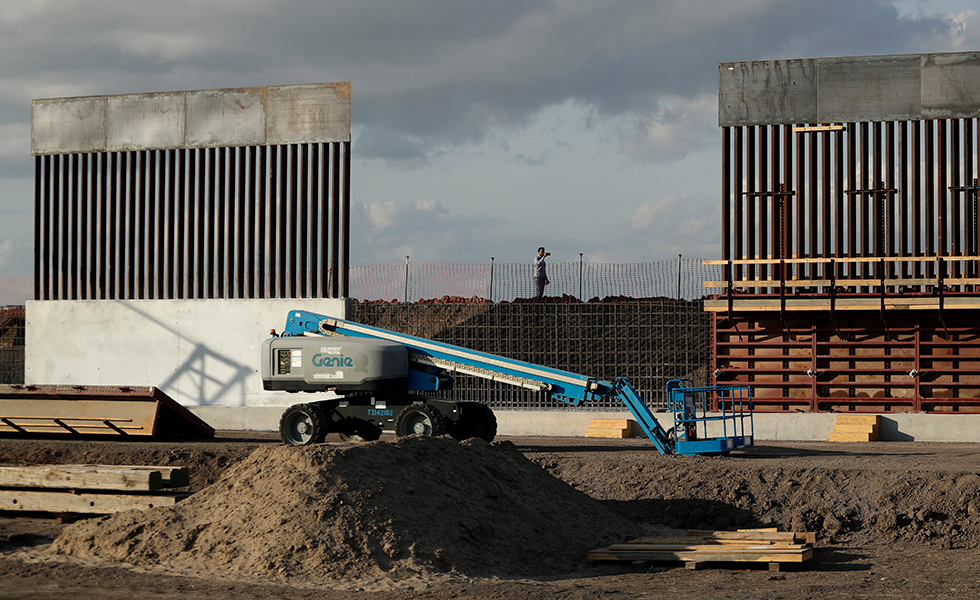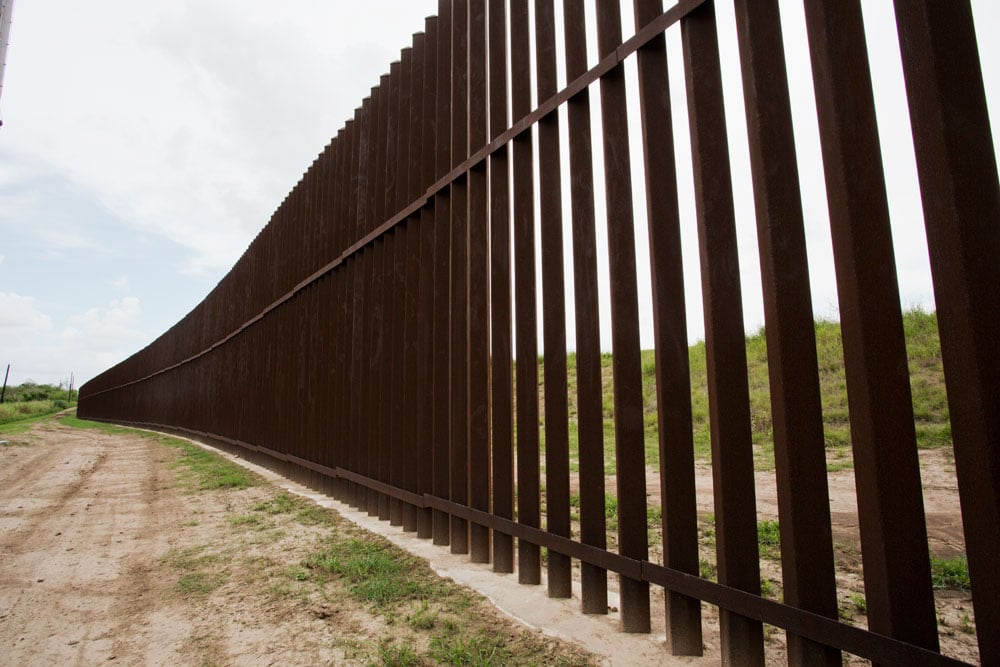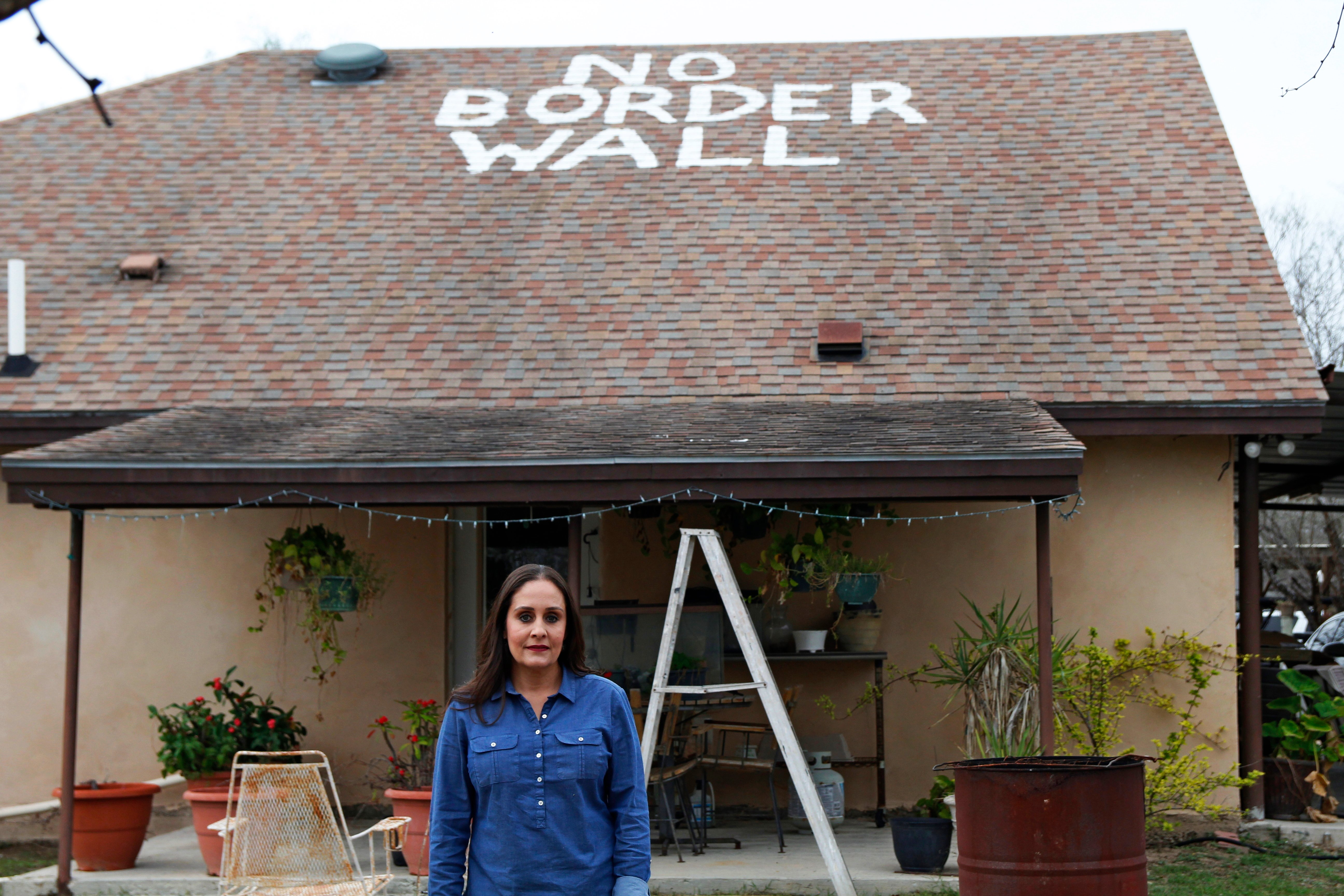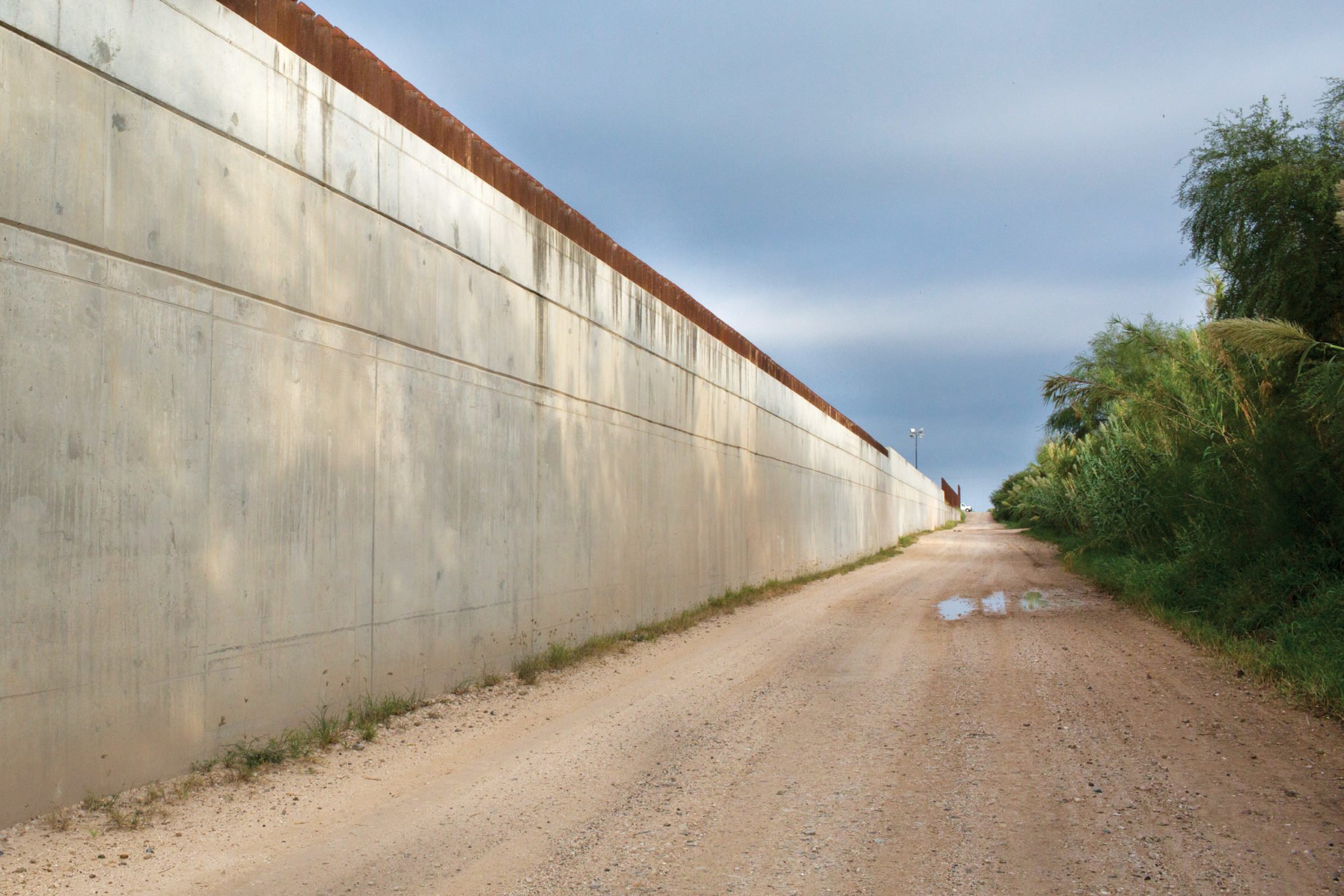
Sunk Costs
The border wall is more expensive than you think.

A version of this story ran in the May / June 2019 issue.
When the federal government builds a border wall, the taxpayer foots two bills. First, there’s the cost to get the thing built, a figure proclaimed in presidential budget requests and press accounts. And second, there’s a slew of concealed costs — expenditures that hide in general operations budgets, arise from human error or kick in years down the line. In the Trump era, those twin outlays combine to make the wall outlandishly expensive.
Excluding the hidden costs, Trump’s wall is running taxpayers a cool $25 million per mile, up nearly fourfold from just a decade ago. To understand why, it helps to know a little border history. In 1907, the U.S. government took possession of a 60-foot-wide strip of land along the U.S.-Mexico border from California to New Mexico as a buffer zone against smuggling. During his second term, George W. Bush built much of his border wall on this government-owned land. But in Texas, the vast majority of border real estate is privately owned, forcing the government to seize property all along the Rio Grande if it wants to build a barrier. That extra burden is a main reason the Lone Star State hosts a small fraction of existing border fence.
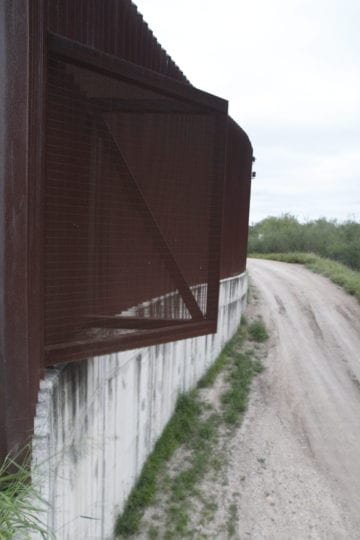
Then there’s the terrain. For example, in Starr County, an unfenced swath of South Texas that’s high on Customs and Border Protection’s priority list, Trump plans to build on the Rio Grande’s craggy, erosion-prone bank — an engineering challenge that adds millions of dollars per mile. As CBP spokesperson Rick Pauza wrote in an email to the Observer: “Every mile of border is different, and therefore there is no one-size-fits-all cost per mile.” In addition, taxpayers today are buying the luxury edition of the wall: a structure that’s up to 12 feet taller than the Bush-era fence and buffered by a 150-foot “enforcement zone.”
But all that’s only part of the story. Not included in the $25 million-per-mile figure is a suite of hidden expenses. Among them:
Routine Maintenance and Operation. Border barriers are potent political symbols. They’re also physical structures that accumulate debris, degrade and break over time. In 2009, CBP estimated that operating and maintaining $2.4 billion worth of fencing, along with associated roads and technology, would cost $3.5 billion over 20 years — almost 50 percent more than the original cost.
Breaches. Depending on design, border fences can be cut through using either bolt cutters or power tools. From 2010 to 2015, fencing was breached 9,287 times, according to the Government Accountability Office. At an average repair cost of $784, the government spent $7.3 million patching those holes in the wall. And the more new wall, the more breaches.
Waste. In November 2011, the Department of Homeland Security’s Office of Inspector General issued a scathing report regarding procurement of steel for the border fence. “CBP purchased more steel than needed, incurred additional storage costs, paid interest on late payments, and approved a higher-priced subcontractor, resulting in additional expenditures of about $69 million,” the report read.
Department of Justice Litigation. Every time landowners refuse to sell their land for the wall, the Department of Justice must take them to court. According to a 2012 planning document prepared by the U.S. Army Corps of Engineers, that legal process costs about $90,000 per tract of land. In sparsely populated Starr County — where property has been passed down for hundreds of years, often without legal record — almost every case must go to court to determine ownership. That money is unaccounted for in congressional appropriations for the wall; it comes instead from the DOJ’s general budget.

Advertising. When the DOJ wants to take Texans’ property for the wall, the agency must sometimes issue notice to potential heirs in the local newspapers. So far, a DOJ spokesperson said, the agency has done so three times in the Rio Grande Valley — cramming many cases into a single publication. Each instance cost the DOJ about $100,000. At a November court hearing in McAllen, a DOJ attorney lamented the state of local media. “We have one person or corporation who owns both papers — so we can’t really negotiate,” he said. “So it’s a large expenditure.”
